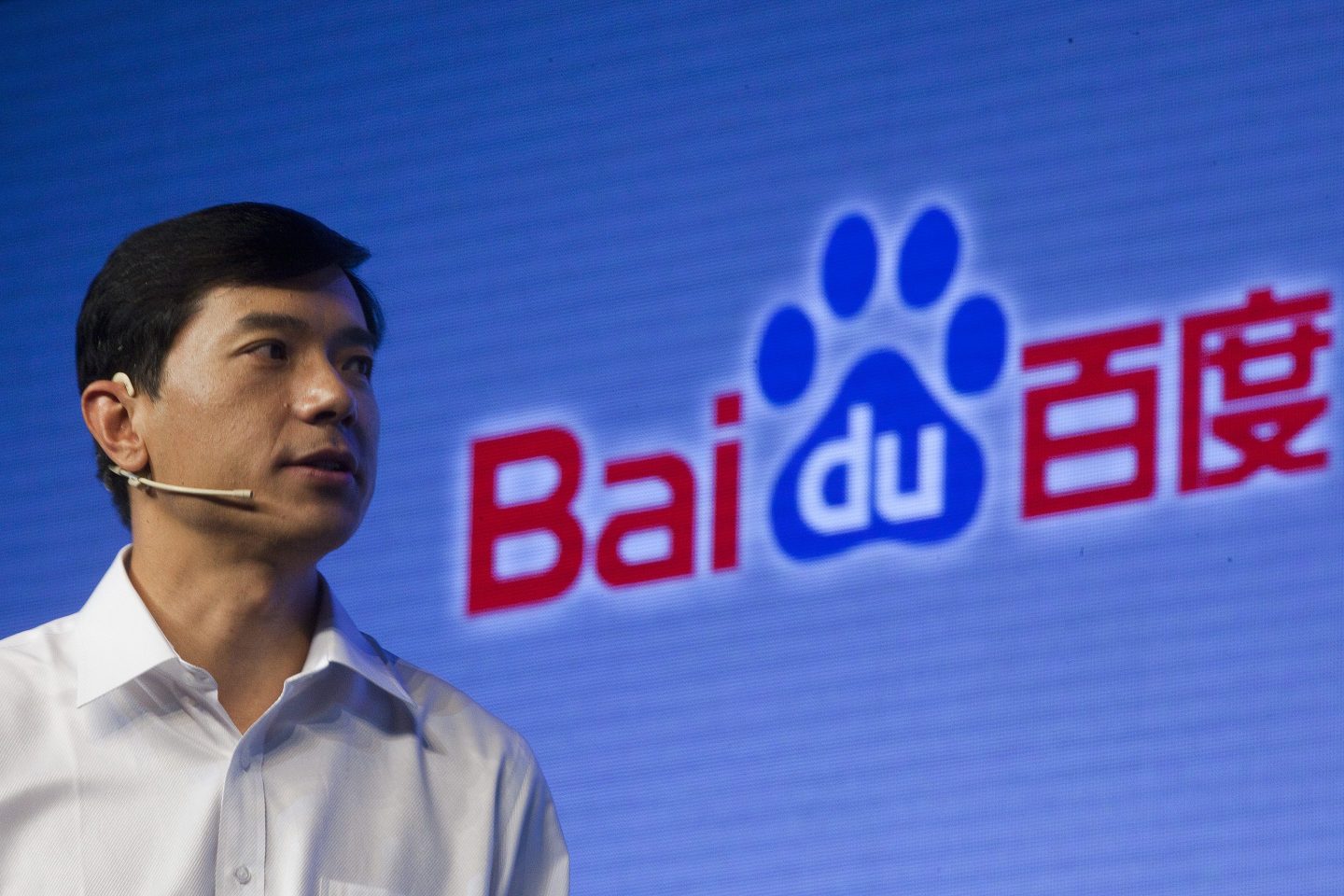
科技行业过于关注基础人工智能(AI)模型,却忽视了开发基于人工智能的应用程序,尽管这是一个有发展前景的业务领域。
百度的首席执行官李彦宏认为,大型科技公司正在开发驱动当前人工智能崛起的基础模型,但它们应该将注意力放到其他领域。它们应该专注于基于这些基础模型,开发人工智能驱动的应用。
李彦宏在深圳举办的行业活动上说:“不断地重复开发基础大模型是对社会资源的极大浪费。人工智能原生时代,我们需要100万量级的人工智能原生应用,但是不需要100个大模型。”
基础模型有数亿甚至数十亿个数据点,因此即使对成熟的科技公司而言,基础模型的开发难度也极大,且成本高昂。
李彦宏表示:“大模型本身是一个基础底座,类似于操作系统,那么最终开发者要依赖为数不多的大模型来开发出各种各样的原生应用。”
百度并未答复置评请求。
中美两国有多家规模最大的科技公司都已经发布了各自的基础模型。掌控未来操作系统的竞赛已经如火如荼地展开。
今年10月,百度发布其最新AI模型文心一言4.0,号称可以与OpenAI最新发布的GPT-4相媲美。2022年11月,OpenAI率先发布人工智能驱动聊天机器人ChatGPT,它已经成为人工智能模型领域的标杆。百度的中国同行阿里巴巴也发布了人工智能模型,并全部开源,希望与Meta的Llama 2竞争。Meta已经成为人工智能领域开源创新的积极支持者。(如果有公司希望使用Llama 2模型,Meta依旧要求公司必须有超过7亿月活跃用户才能够获得特别许可。)亚马逊(Amazon)的策略则略有不同,它一方面发布了自己的模型Titan,同时还支持以订阅的方式使用其他开发者的模型。李彦宏认为,追赶这些在科技界占据主导地位的公司是不可能的,而且最终将徒劳无功。
他表示,开发人工智能应该效仿智能手机革命的做法。在智能手机普及并且变得价格实惠后,公司开始推出各种应用程序,有些应用程序凭借一己之力使其背后的开发公司变成了大型科技公司。他列举了Uber和抖音(TikTok的中国姊妹版)的例子。
李彦宏称:“直到今天,无论是中国也好,美国也好,我认为最好的人工智能原生应用还没有出现。”
初创公司和大型科技公司都想进入这个市场,因此中国公司开发了大量相互竞争的人工智能基础模型。拥有热门通信应用程序微信的中国公司腾讯的一位高管表示,在中国“上百个大模型乱斗的局面已经开始”。分析师早已开始对所有竞争对手失去兴趣,认为他们过于雷同。他们还担心,面对根深蒂固的大竞争对手,新公司很难立足。百度发布人工智能模型当天,其股价下跌了3%。
李彦宏的观点与OpenAI的首席执行官萨姆·奥尔特曼截然不同(编者注: OpenAI董事会已于11月17日意外解除了萨姆·奥特曼的CEO职务)。奥尔特曼认为,大模型将被针对特定使用案例定制的小模型取代。今年4月,奥尔特曼在麻省理工学院(MIT)举行的一次活动上说:“巨大模型的时代接近尾声,我们会用其他方式让这些模型变得更完善。”
由于开发大模型难度大而且成本高昂,因此它们主要集中在少数科技公司手中,这引发了外界对人工智能开发透明度的质疑。斯坦福大学(Stanford University)的研究发现,美国10家规模最大的人工智能开发机构,均未能通过“透明度测试”。测试的目的是评价这些机构的数据来源以及它们如何使用这些数据和生成的模型。
中国政府也寻求对人工智能大模型的开发和使用进行监管。今年7月,中国国家互联网信息办公室发布了针对人工智能使用的政府法规,这是全球最早的相关法规之一。这些新规也可能会减少中国人工智能模型的数量。(财富中文网)
译者:刘进龙
审校:汪皓
科技行业过于关注基础人工智能(AI)模型,却忽视了开发基于人工智能的应用程序,尽管这是一个有发展前景的业务领域。
百度的首席执行官李彦宏认为,大型科技公司正在开发驱动当前人工智能崛起的基础模型,但它们应该将注意力放到其他领域。它们应该专注于基于这些基础模型,开发人工智能驱动的应用。
李彦宏在深圳举办的行业活动上说:“不断地重复开发基础大模型是对社会资源的极大浪费。人工智能原生时代,我们需要100万量级的人工智能原生应用,但是不需要100个大模型。”
基础模型有数亿甚至数十亿个数据点,因此即使对成熟的科技公司而言,基础模型的开发难度也极大,且成本高昂。
李彦宏表示:“大模型本身是一个基础底座,类似于操作系统,那么最终开发者要依赖为数不多的大模型来开发出各种各样的原生应用。”
百度并未答复置评请求。
中美两国有多家规模最大的科技公司都已经发布了各自的基础模型。掌控未来操作系统的竞赛已经如火如荼地展开。
今年10月,百度发布其最新AI模型文心一言4.0,号称可以与OpenAI最新发布的GPT-4相媲美。2022年11月,OpenAI率先发布人工智能驱动聊天机器人ChatGPT,它已经成为人工智能模型领域的标杆。百度的中国同行阿里巴巴也发布了人工智能模型,并全部开源,希望与Meta的Llama 2竞争。Meta已经成为人工智能领域开源创新的积极支持者。(如果有公司希望使用Llama 2模型,Meta依旧要求公司必须有超过7亿月活跃用户才能够获得特别许可。)亚马逊(Amazon)的策略则略有不同,它一方面发布了自己的模型Titan,同时还支持以订阅的方式使用其他开发者的模型。李彦宏认为,追赶这些在科技界占据主导地位的公司是不可能的,而且最终将徒劳无功。
他表示,开发人工智能应该效仿智能手机革命的做法。在智能手机普及并且变得价格实惠后,公司开始推出各种应用程序,有些应用程序凭借一己之力使其背后的开发公司变成了大型科技公司。他列举了Uber和抖音(TikTok的中国姊妹版)的例子。
李彦宏称:“直到今天,无论是中国也好,美国也好,我认为最好的人工智能原生应用还没有出现。”
初创公司和大型科技公司都想进入这个市场,因此中国公司开发了大量相互竞争的人工智能基础模型。拥有热门通信应用程序微信的中国公司腾讯的一位高管表示,在中国“上百个大模型乱斗的局面已经开始”。分析师早已开始对所有竞争对手失去兴趣,认为他们过于雷同。他们还担心,面对根深蒂固的大竞争对手,新公司很难立足。百度发布人工智能模型当天,其股价下跌了3%。
李彦宏的观点与OpenAI的首席执行官萨姆·奥尔特曼截然不同(编者注: OpenAI董事会已于11月17日意外解除了萨姆·奥特曼的CEO职务)。奥尔特曼认为,大模型将被针对特定使用案例定制的小模型取代。今年4月,奥尔特曼在麻省理工学院(MIT)举行的一次活动上说:“巨大模型的时代接近尾声,我们会用其他方式让这些模型变得更完善。”
由于开发大模型难度大而且成本高昂,因此它们主要集中在少数科技公司手中,这引发了外界对人工智能开发透明度的质疑。斯坦福大学(Stanford University)的研究发现,美国10家规模最大的人工智能开发机构,均未能通过“透明度测试”。测试的目的是评价这些机构的数据来源以及它们如何使用这些数据和生成的模型。
中国政府也寻求对人工智能大模型的开发和使用进行监管。今年7月,中国国家互联网信息办公室发布了针对人工智能使用的政府法规,这是全球最早的相关法规之一。这些新规也可能会减少中国人工智能模型的数量。(财富中文网)
译者:刘进龙
审校:汪皓
The tech industry is too focused on foundational AI models instead of the potentially booming business of developing artificial intelligence based apps.
Baidu CEO Robin Li believes major tech players, working toward building the underlying models powering the current rise of AI should direct their efforts elsewhere. Namely, they should focus on developing AI-powered applications built on top of the models.
“Constantly redeveloping foundational large models represents an enormous waste of social resources.” Li said at an industry event in Shenzhen. “In the AI-native era, what we need are AI-native applications at a scale of millions.”
Foundational models have hundreds of millions, even billions, of data points, which make them difficult and costly to develop for all but the most sophisticated tech companies.
“A large language model itself is a basic foundation akin to an operating system, but ultimately developers need to rely on a limited number of large models to develop various native applications,” Li said.
Baidu did not respond to a request for comment.
Many of the biggest tech companies in both China and the U.S. have already released their own foundational models. The race to own the operating system of the future is well underway.
In October, Baidu unveiled its latest AI model, Ernie 4.0, which it said could compete with OpenAI’s latest release, GPT-4. OpenAI became the benchmark for AI models when it debuted its ChatGPT AI-powered chatbot in November 2022. Alibaba, Baidu’s peer in China, also has its own model, which it made open source in an effort to compete with Llama 2 from Meta, which has become a vocal supporter of open source innovation in AI. (Meta still requires companies with over 700 million monthly active users to get a special license if they wish to use its Llama 2 model). Amazon adopted a slightly different strategy, releasing its own model Titan, while also offering access to models from other developers via a subscription. Catching up with these companies, among the most dominant in tech, is improbable and ultimately fruitless, Li argued.
He said AI development should follow in the footsteps of the smartphone revolution. After smartphones became popular and affordable, companies started introducing a wide variety of apps, some of which became major tech companies in their own right. He cited examples like Uber and Douyin, the Chinese version of TikTok.
“To date neither in China nor the US have we witnessed the emergence of the best AI-native applications,” Li said.
Chinese companies have created a number of competing AI foundation models, as startups and big tech firms try to elbow their way into the market. An executive from Tencent, the Chinese company that operates the popular messaging app WeChat, said the “war of a hundred models has begun” in China. Analysts have started to sour on all the rivals, which they consider too similar to each other. They’re also concerned new entrants will struggle to gain a foothold against entrenched, bigger players. Baidu’s stock dipped 3% the day it released its AI model.
Li’s comments take a different approach than those of OpenAI CEO Sam Altman, who speculated that ever bigger models might be supplanted by smaller ones tailored to specific use cases. “I think we’re at the end of the era where it’s gonna be these giant models, and we’ll make them better in other ways,” Altman said at an MIT event in April.
Because of the difficulty and expense of building these models, they are generally concentrated in the hands of a few tech companies, making them flashpoints for questions about transparency in AI development. A study from Stanford University found that 10 of the biggest AI developers in the U.S. all failed a “transparency test” meant to evaluate the origin of their data and how that data and the resulting models are used.
China’s government has also sought to regulate how large AI models are built and regulate how they’re used. In July, China’s Cyberspace Administration released what were some of the world’s first government regulations governing the use of AI. Those new rules could also serve to winnow the field of AI models in China.






